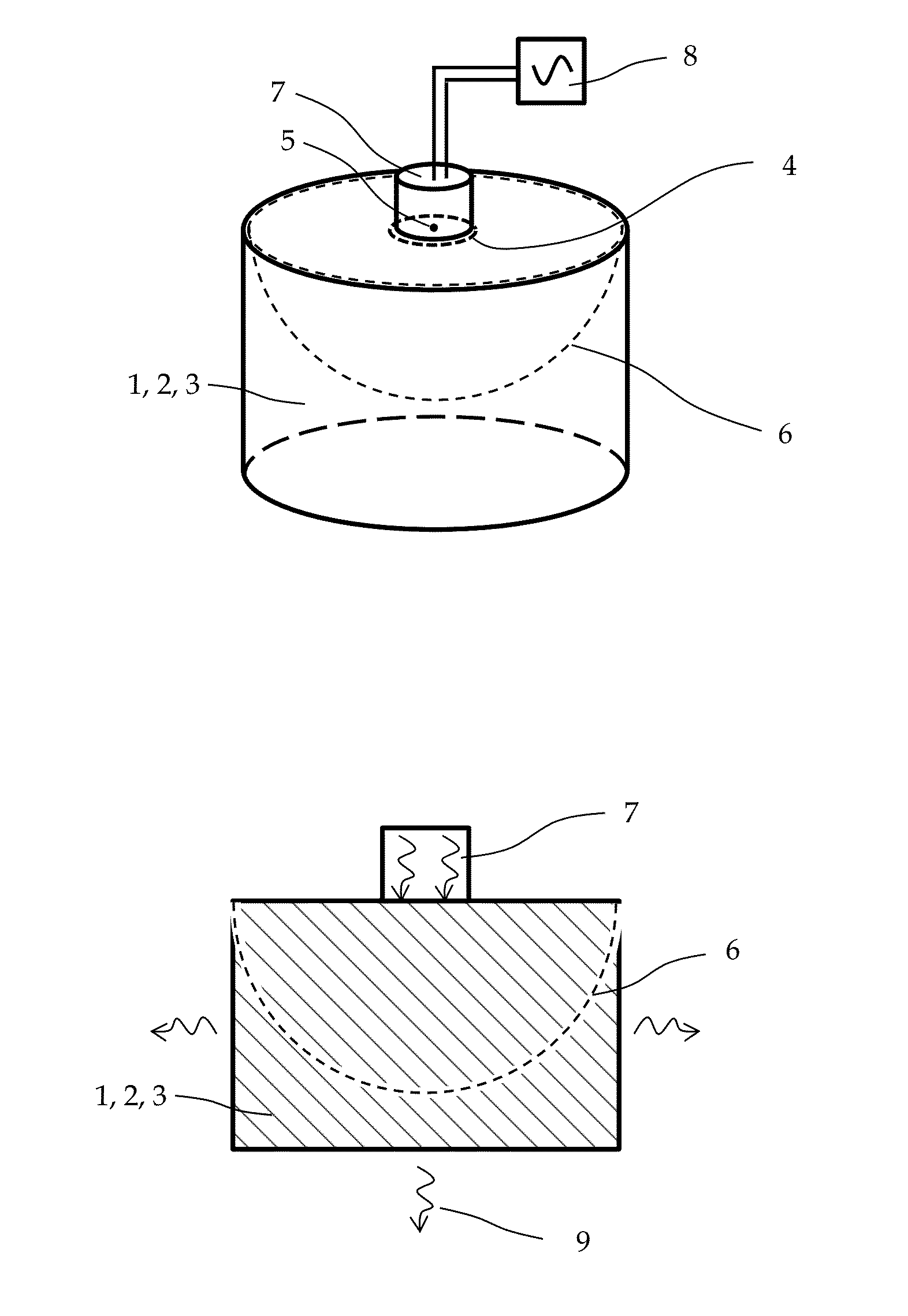Apparatus and method for assessing thermo-mechanical fatigue related phenomena within a test material
a technology of thermomechanical fatigue and test material, which is applied in the direction of material flaw investigation, measurement devices, instruments, etc., can solve the problems of not giving sufficient details to include, and not excluding the possibility of additional non-isothermal effects that might further accelerate the crack, so as to achieve simple and cost-effective effects
- Summary
- Abstract
- Description
- Claims
- Application Information
AI Technical Summary
Benefits of technology
Problems solved by technology
Method used
Image
Examples
Embodiment Construction
[0059]FIGS. 1A, 1B, and 1C show a schematic representation of a test apparatus for assessing thermo-mechanical fatigue related phenomena within a test material 1, FIGS. 1B and 1C being cross-sectional views with additional detail, and FIG. 1C illustrating additional features not shown in FIGS. 1A and 1B. The embodiment utilizes a test specimen 2 prepared of a body 3 of test material 1, with a primary heat introduction zone 4 consisting of a portion of the surface of said body 3, of a size characterized by its maximum dimension, and having a centroid 5. The size and shape of the body 3 is configured to substantially include a hemispherical region 6, described earlier as the fiducial hemisphere, of said test material 1 centered upon the centroid 5. For reasons already described, the ratio of the radius of the fiducial hemisphere 6 to the maximum dimension of the primary heat introduction zone 4 is configured to be greater than or equal to 1.2 to provide basic utility.
[0060]The embodim...
PUM
| Property | Measurement | Unit |
|---|---|---|
| porosity | aaaaa | aaaaa |
| size | aaaaa | aaaaa |
| thermo-mechanical fatigue | aaaaa | aaaaa |
Abstract
Description
Claims
Application Information
 Login to View More
Login to View More - R&D
- Intellectual Property
- Life Sciences
- Materials
- Tech Scout
- Unparalleled Data Quality
- Higher Quality Content
- 60% Fewer Hallucinations
Browse by: Latest US Patents, China's latest patents, Technical Efficacy Thesaurus, Application Domain, Technology Topic, Popular Technical Reports.
© 2025 PatSnap. All rights reserved.Legal|Privacy policy|Modern Slavery Act Transparency Statement|Sitemap|About US| Contact US: help@patsnap.com



